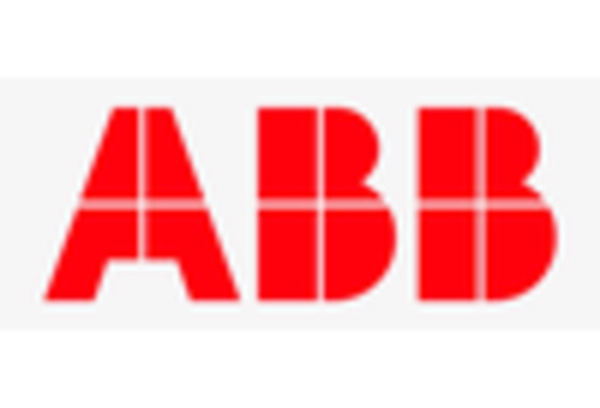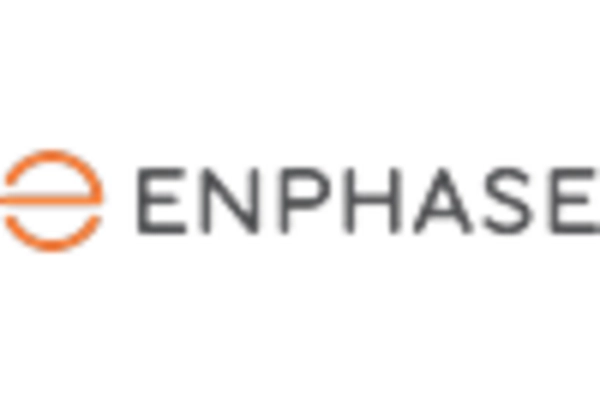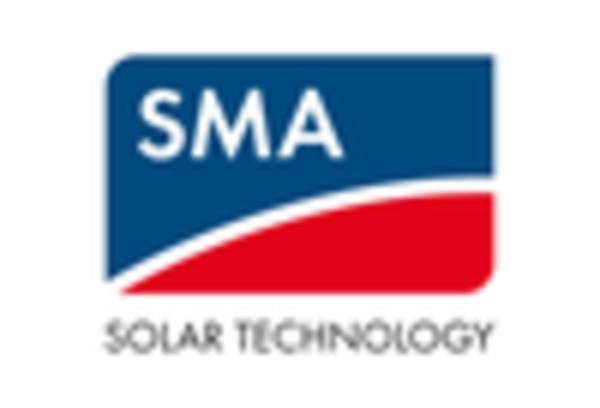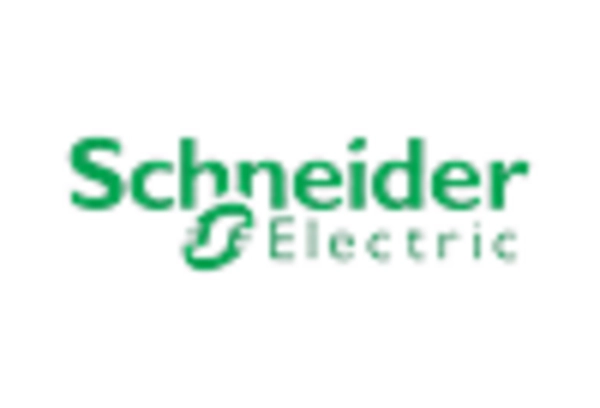Rising Energy Storage Solutions
The integration of energy storage solutions is emerging as a pivotal driver in the Renewable Energy Inverters Market. As the demand for renewable energy sources increases, the need for effective energy storage systems becomes apparent. In 2025, the market is expected to see a significant rise in the deployment of battery storage systems alongside renewable energy installations. This trend is driven by the need to address the intermittency of renewable energy sources, such as solar and wind. Inverters play a critical role in managing the flow of energy between the storage systems and the grid, ensuring optimal performance. The growing emphasis on energy resilience and reliability is likely to propel investments in storage technologies, thereby enhancing the demand for compatible inverters. Consequently, the Renewable Energy Inverters Market is poised for growth as it adapts to the evolving landscape of energy storage.
Government Incentives and Policies
Government incentives and supportive policies play a crucial role in shaping the Renewable Energy Inverters Market. Many governments are implementing favorable regulations and financial incentives to promote the adoption of renewable energy technologies. For instance, tax credits, rebates, and grants for solar installations are becoming commonplace, encouraging both residential and commercial sectors to invest in renewable energy systems. In 2025, it is anticipated that these policies will continue to evolve, further stimulating market growth. The introduction of renewable portfolio standards and feed-in tariffs is also likely to enhance the attractiveness of renewable energy projects, thereby increasing the demand for inverters. As a result, the Renewable Energy Inverters Market is expected to benefit from a more favorable regulatory landscape, driving innovation and competition among manufacturers.
Increasing Demand for Renewable Energy
The Renewable Energy Inverters Market is experiencing a surge in demand driven by the global shift towards sustainable energy sources. As countries strive to meet their renewable energy targets, the need for efficient inverters becomes paramount. In 2025, the market is projected to grow significantly, with estimates suggesting a compound annual growth rate of over 10%. This growth is largely attributed to the rising installation of solar and wind energy systems, which require advanced inverter technology to optimize energy conversion and grid integration. Furthermore, the increasing awareness of climate change and the need for energy independence are propelling investments in renewable energy infrastructure, thereby enhancing the demand for inverters. Consequently, manufacturers are focusing on innovation to meet the evolving needs of the Renewable Energy Inverters Market.
Consumer Demand for Sustainable Solutions
Consumer demand for sustainable energy solutions is significantly influencing the Renewable Energy Inverters Market. As awareness of environmental issues grows, more consumers are seeking to reduce their carbon footprint by adopting renewable energy technologies. In 2025, it is projected that residential and commercial sectors will increasingly invest in solar energy systems, driven by the desire for energy independence and sustainability. This shift in consumer behavior is likely to result in a higher demand for efficient and reliable inverters that can optimize energy production. Additionally, the rise of eco-conscious consumers is prompting manufacturers to innovate and offer products that align with sustainability goals. As a result, the Renewable Energy Inverters Market is expected to experience robust growth, fueled by the increasing preference for environmentally friendly energy solutions.
Technological Innovations in Inverter Design
Technological innovations are at the forefront of the Renewable Energy Inverters Market, significantly enhancing the efficiency and functionality of inverters. Recent advancements in power electronics, such as the development of multi-level inverters and smart inverters, are enabling better energy management and integration with smart grid technologies. These innovations not only improve the performance of renewable energy systems but also facilitate the integration of energy storage solutions, which are becoming increasingly important in energy management. In 2025, the market is likely to witness a proliferation of advanced inverter technologies that offer enhanced features such as real-time monitoring, grid support capabilities, and improved reliability. This trend indicates a shift towards more sophisticated inverter solutions that cater to the diverse needs of consumers and businesses in the Renewable Energy Inverters Market.


















Leave a Comment